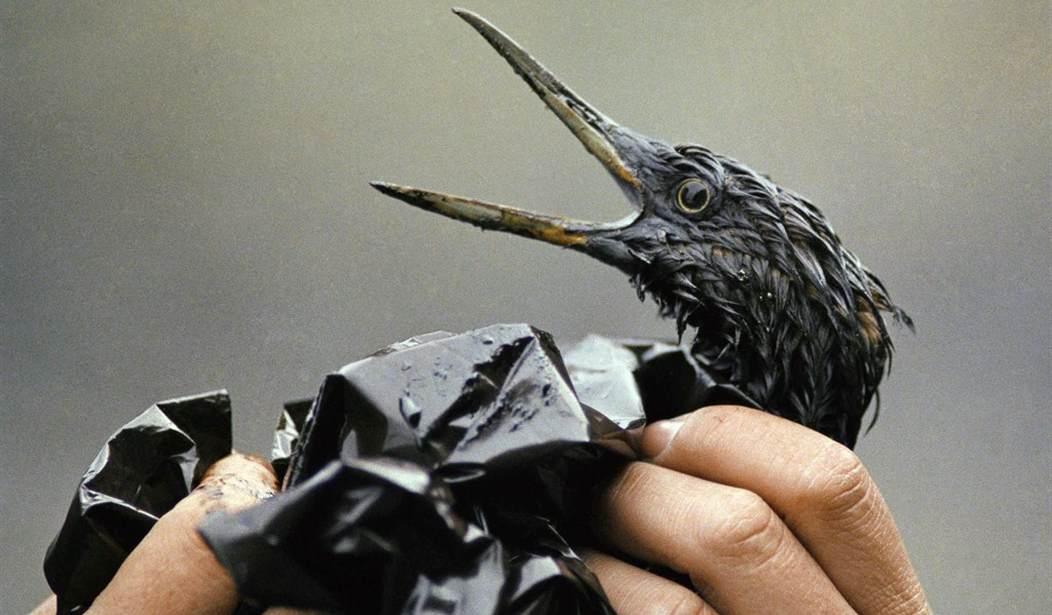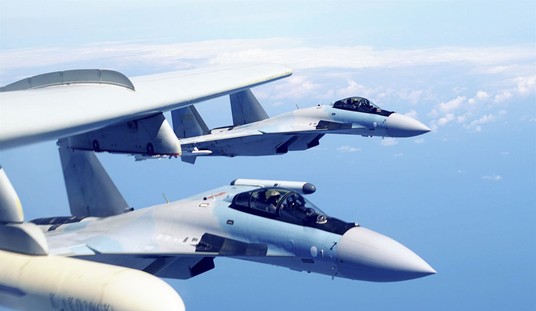On the 21st of August, an unescorted Greek oil tanker, the Sounion, came under attack from the explosive munitions happy Houthi shooty rebels in Yemen attempting a Red Sea transit. The vessel received multiple combined weapons blows from small arms and at least four explosive projectiles (no word yet if drones or missiles) from the terrorists aboard small attack boats before losing power. The ship dropped anchor in place as fires were beginning aboard.
Luckily for the crew, a French destroyer - part of the Prosperity Guardian umbrella coalition supposedly in those waters to provide shipping protection - was in the area and able to take them all off the ship safely. They also managed to extinguish the fire before abandoning ship.
A French destroyer rescued 29 mariners from an oil tanker that came under repeated attack in the Red Sea by Yemen’s Houthi rebels, officials said Thursday, while also destroying a bomb-carrying drone boat in the area.
The assault on the Sounion, the most serious in the Red Sea in weeks, comes during a monthslong campaign by the Houthis targeting ships over the Israel-Hamas war in the Gaza Strip that has disrupted a trade route through which $1 trillion in cargo typically passes each year.
The Sounion is now at anchor in the Red Sea and no longer drifting, the European Union’s Operation Aspides said. The vessel had been staffed by a crew of 25 Filipinos and Russians, as well as four private security personnel, who have been taken to nearby Djibouti, the EU mission in the Red Sea said.
Putting out the blaze was kind of a wasted gesture, because the Houthis returned when the coast was clear in order to shoot themselves some pretty spectacular propaganda video. The rebels aren't really concerned with the possibility of oil leaking or anything of that nature from a fully loaded vessel carrying 150,000 tonnes of crude oil.
They only wanted it sunk...
...Houthi military spokesman Brig. Gen. Yahya Saree claimed the attack in a prerecorded statement late Thursday night, as well as another attempted attack Wednesday.
“The ship was accurately and directly hit while sailing in the Red Sea and is at risk of sinking, thanks to God,” he said.
...and the flashier death, the better.
So they did what they could to finish the Sounion off.
It is not clear from this video whether the fires started by the #Houthis will consume and burn the crude oil on board.
— Sal Mercogliano (WGOW Shipping) 🚢⚓🐪🚒🏴☠️ (@mercoglianos) August 23, 2024
You can see some of it on fire pouring into the sea. It will take satellite photos to determine if the oil is spilling, being burned up, or sinking.
Much to the Houthis' consternation, for all the explosives, the darned thing is refusing to sink under the waves and is still sitting where she was left anchored, blazing away. What has everyone with half a brain concerned is that the tanker also now appears to be leaking oil instead of just burning it off.
Someone had managed to get two tugs lined up to at least move the wreck out of the channel. Perhaps they could get the hulk to where crews could begin fighting the fires and offload the oil before the situation lurched into an environmental nightmare.
The Houthis quickly ixnayed the rescue mission tugs with continued threats of violence.
The Greek-flagged crude oil tanker Sounion that was recently attacked by Yemen’s Houthis is still on fire in the Red Sea and now appears to be leaking oil, a Pentagon spokesman said on Tuesday.
...Pentagon spokesman Air Force Major General Patrick Ryder said that a third party had tried to send two tugs to help salvage the Sounion, but the Houthis threatened to attack them. He said the tanker was carrying about 1 million barrels of crude oil.
The situation is at an impasse as far as movement, but the ship is a disaster in the making. If its massive bulk goes down where it is, it is a navigational hazard of epic proportions to be dealt with eventually. The oil on board flowing freely into the Red Sea presents the possibility of an instant environmental catastrophe.
The Sounion suezmax, the ship that risks becoming the worst tanker spill this century, remains on fire and may be leaking oil, according to the US Department of Defense.
The ship was attacked multiple times by the Houthis in international waters between Yemen and Eritrea last Wednesday. The ship, owned by Greece’s Delta Tankers, has been on fire since August 23 with the Houthis releasing a dramatic video of the moment they set it ablaze.
A seafarer who passed by the ship at 12 nautical miles range told Splash today that all he was able to see through binoculars was just half the ship, the aft having sunk, and “flames with dense smoke” on the deck. Satellite images taken two days ago obtained by Splash show a heavily charred deck.
The U.N. and shipping interests in the region have narrowly avoided such a problem before and learned tremendous lessons doing so when they dealt with the oil tanker FSO Safer.
That vessel had been abandoned off the Yemeni coast after the 2015 civil war broke out. Serious concerns about the hulk starting to rust completely through and beginning to leak the 1.1M gals of oil aboard into the Red Sea galvanized a relief effort. The UN brought in what they call a "Euronav" tanker and safely emptied the FSO Safer of its oil last year.
What they learned from studying the projected consequences for the surrounding Red Sea location of an FSO Safer oil spill was published in a pretty dire report.
...“Now that study can be seen as a reasonable proxy for the consequences of a major spill from the Sounion given that both the geographic location and the amount of oil involved is almost the same,” Jensen, who heads up Vespucci Maritime in Copenhagen, wrote in a LinkedIn post today.
According to the UN report, the FSO Safer oil spill impact would have devastated the fishing communities on Yemen’s Red Sea coast where 500,000 people make their living from the fishing industry with 1.7m dependents.
Desalination plants on the Red Sea coast could be closed, cutting off water supply for millions, the UN report warned, adding that oil could reach the shores of Saudi Arabia, Eritrea, Djibouti and Somalia.
The UN estimated the clean-up bill from a possible FSO Safer disaster could have reached $20bn, just $1bn shy of the annual GDP of Yemen.
Fishing impacts are apparent, as are those on wildlife. I've seen it up close and personally while living through the Deep Water Horizon spill hitting our beaches here and the clean-up.
But having to close the desalinization plants? Not so obvious to us. Yowsahs.
And even as they fret helplessly about the looming possibility of the "worst tanker spill this century," word comes of yet another impact of this attack.
Red Sea Insurance Nearly Doubles After 'Sounion' Attack
— Sal Mercogliano (WGOW Shipping) 🚢⚓🐪🚒🏴☠️ (@mercoglianos) August 28, 2024
War Risk Insurance had peaked at about 1.0 % back in Feb; fell to 0.4% and now has nearly doubled to 0.75%.https://t.co/LaoxVh8KDv
150,000 tonnes of crude (1 tonne = 2200 lbs) leaking out of the wreckage is the menace here.
For comparison, the Exxon Valdez, whose name can still send sad shivers to the hearts of Alaska and animal lovers, was 37,000 tonnes.
Maybe the Houthi shooties should be rethinking that anti-tug strategy.







Join the conversation as a VIP Member